
Those not put to sleep by last month’s overview of aircraft engine principles will recall a piston engine’s working medium is air. This month we’ll examine how the engine breathes in its air and adds fuel to the fire, a topic generally referred to as intake or induction.
Because the topic is so large, we’re also breaking induction into three major sections. This month we’ll look at general basics and how they apply to carbureted engines. We’ll tackle fuel injection and forced induction—turbos and such—in separate articles.
Textbook Basics
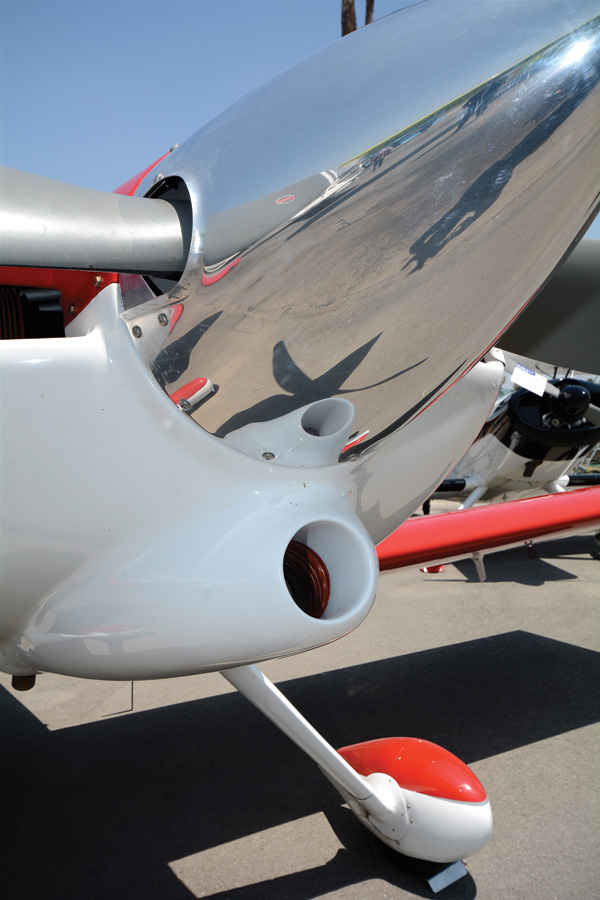
Before getting into describing intake hardware, a quick review of engine breathing concepts and nomenclature will assure we’re all on the same page.
It’s useful to remember air enters the engine thanks to the weight of the atmosphere above the engine pushing the air down. In other words, as the engine’s intake valve opens, it’s the weight of the atmosphere that pushes air into the cylinder. This is called natural aspiration and is the norm for most Experimental aircraft engines. Obviously the air and energy available for engine breathing depends on density altitude, so a cold day at sea level means the engine can aspirate more air mass than during a hot day in Denver or at 50,000 feet. And it’s the mass of air, not the volume, that matters.
As airplane people, most of us are at least conscious of aerodynamics, and it’s good to remind ourselves the aerodynamic properties at work on the outside of our airframes are also at work inside the intake tract. Ideally the intake tract will be carefully shaped to maintain the optimal volumes, cross sectional areas, and remain devoid of sharp edges, pinched turns, and other aerodynamic insults. All this matters in the intake tract where tight packaging and low-energy airflow (compared to exhaust) magnify design imperfections. The less your inlet resembles a Sousaphone or a half-crushed shoebox the better.

The Air Path
In practice air begins its journey to the combustion chamber at the air inlet, which may or may not include an air filter. Also, faster homebuilts benefit from a ram air intake where a dedicated scoop packs in slightly more air than the engine can breathe for a minor supercharging effect. In that case the air filter is typically bypassed once airborne to maximize airflow.
Because engine load, and secondarily rpm, is most easily controlled in gasoline engines by throttling the engine’s air supply (turbines and diesels do this by limiting the fuel supply), some sort of throttle blade is typically the next item in our air passage. The throttle is contained either in a carburetor or fuel injection system’s throttle body. The latter is traditionally called the fuel servo in aviation lingo because the industry standard Bendix system combines the throttle body and fuel metering functions in a single unit, and the naming emphasis was apparently on the fuel side of things.
The carburetor is a mechanical device designed to mix the incoming air with gasoline to produce a combustible mixture. Therefore, downstream of the carburetor, the inlet tract contains an air/fuel mix. This is not the case with fuel injection, as the fuel is added later, and so the inlet tract is “dry”—it flows only air.
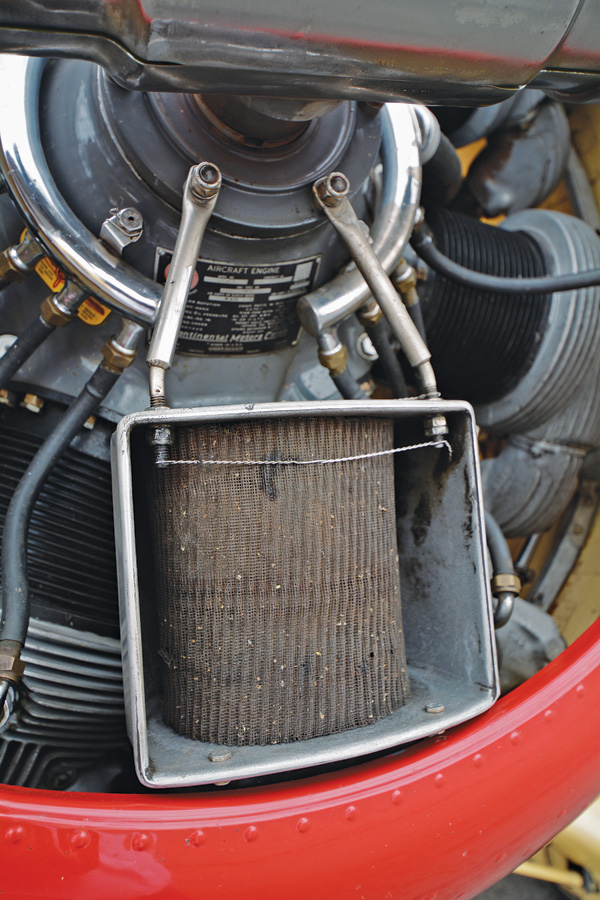
From the throttle body the air or air/fuel mixture is conveyed to a cylinder via an intake runner. Most internal combustion engines group the runners, or at least some portion of the runners, into a single casting or weldment called an intake manifold.
When the runner reaches the cylinder head, it mates with the intake port in the head. The port terminates at the intake valve seat, where, not surprisingly, the intake valve sits when it is not open. On the far side of the intake valve is the combustion chamber and a rather rude change in temperature for our air molecules.
For historical context, and to illustrate there are actually many variations to intake architecture, the big radials and V-12s of yore typically used a pressure carburetor. Today we would call this single-point mechanical fuel injection, but in the argot of the times, a “carburetor” (we’d call it a fuel servo today) metered the airflow and resulting gasoline, plus provided the throttle. But instead of admitting the fuel to the airflow at the “carburetor,” the fuel was sprayed into the inlet track well downstream by a single fuel injector. Typically this high-volume lawn sprinkler was aimed at the supercharger’s inlet, or, as in many radial engines, the fuel was actually slung from passages in the supercharger impeller. This helped even fuel delivery considerably among cylinders (which can be an issue in non-supercharged, carbureted radials).
Before leaving our overview of the intake system, we should touch on the concept of intake tuning. Obviously air does not flow as a steady stream through the inlet tract in a running engine. The rhythmic opening and closing of the intake valve, plus the variable energy (sometimes called the signal) imparted to the intake air by the downward moving piston, not to mention the mind-numbing complexities of these inlet pulses communicating in the intake manifold’s common area—the plenum—results in a very dynamic, pulsating environment.
In short, not only do the air molecules travel in a series of rapidly accelerating and decelerating motions, but also meaningful energy waves are generated. It is far beyond the scope of this article to describe this complex, arcane wave action, but suffice to say the intake runner length (especially), cross section, taper, total volume, and shape matter. Optimizing these parameters is called tuning by engine designers and pipe organ manufacturers; it significantly affects power and efficiency, and to the first order depends on cylinder displacement, rpm, and valve timing. These wave effects gain importance as an engine’s specific output (power per displacement) increases. It’s another reason why big, slow-turning engines have predominated in aviation—such engines typically require little intake tuning (simple, easily packaged intakes do OK).
Now we’ll examine carbureted and fuel injected systems in greater detail.
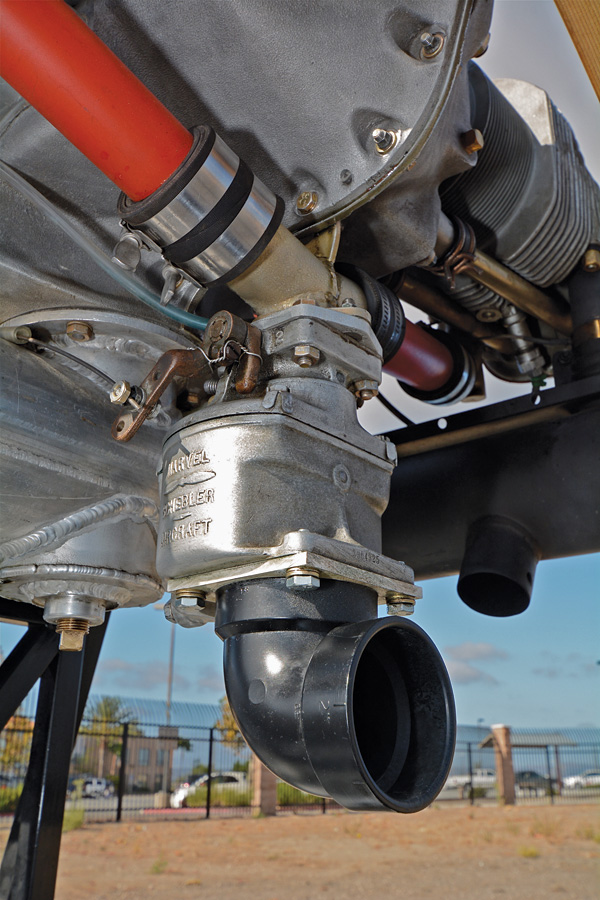
Carburetion
Aircraft carburetor sophistication these days ranges from a metered leak to a well-engineered metered leak. This basic carburetion helps affordability (if you can call a $27,000 engine affordable), and there’s always fuel injection when more efficiency is demanded.
Carburetors work on pressure differentials. Inside the carburetor a venturi constricts and then expands the airflow, generating a low-pressure area vented against higher ambient air pressure to push fuel from a small fuel reservoir called the float bowl. Minimal fuel pressure is needed to keep the float bowl at a steady level, and in high-wing aircraft gravity flow will do the job, so a simple, low-volume, low-pressure engine-driven fuel pump is all that’s needed.
Gravity is also used to keep the fuel level constant in the float bowl, so turning the airplane upside down for all but positive-G maneuvers means fuel slosh in the bowl will cause extra rich or lean mixtures to the point the engine quits.
Several auxiliary circuits address the complications brought on by idling, maximum engine output, and transient response (engine acceleration). The idle circuit is a simple tiny passage better scaled to providing the small amount of fuel required when idling.
An accelerator pump is mechanically joined to the throttle linkage. This is a simple plunger to provide an extra squirt of fuel when the throttle is opened rapidly. This is because lightweight air has low inertia and responds near-instantly to opening the throttle, while the heavier fuel lags. Absent an accelerator pump the resulting momentary lean air/fuel mixture is sufficient to invoke passenger interrogations when the engine momentarily quits every time the pilot gooses the throttle for a go-around.
Because a relatively rich air/fuel mixture is needed to produce maximum power, and extra fuel on top of that is administered to cool the combustion event (suppress detonation), a fuel enrichment circuit opens as Wide Open Throttle (WOT) is reached. Inexplicably this was known as the “economizer” circuit in a fit of marketing largesse during the 1950s and ’60s. Well, it was beneficial to the petroleum company economies, so it’s all how you look at it.
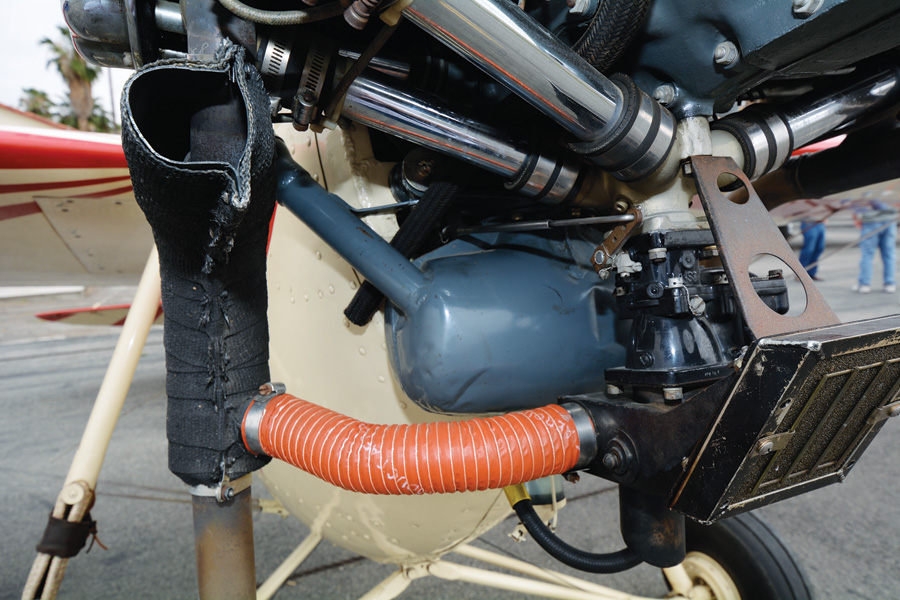
Carburetion’s main advantages are simplicity and low cost. The carburetor is the only closely machined part in the system (and none too fancy at that), and it can be a pretty simple device on a moderate performance, steady-state rpm engine such as we fly with. Also, with a minimum of small passages, a carburetor is more forgiving of small junk in the fuel; it doesn’t clog anywhere near as quickly as fuel injection. Servicing and troubleshooting are simple, intuitive tasks, too.
Because the float bowl provides a ready supply of fuel at the engine, the engine can be primed by stroking the throttle, thus activating the accelerator pump. There is no need for a backup electric fuel pump for priming during engine starts.
A double-edged sword with carburetion is the fuel is administered to the engine at a single point well away from the intake ports. On the plus side, this gives the air and fuel more mixing time. This action provides evaporative cooling for a denser charge, and all told, a sophisticated carbureted intake (not quite what we normally have in GA) can make excellent power at WOT, even outperforming electronic fuel injection. Yes, fuel distribution, lean-of-peak operation, fuel economy, plug fouling, and reduced pilot workload can improve with fuel injection, but not necessarily peak power.
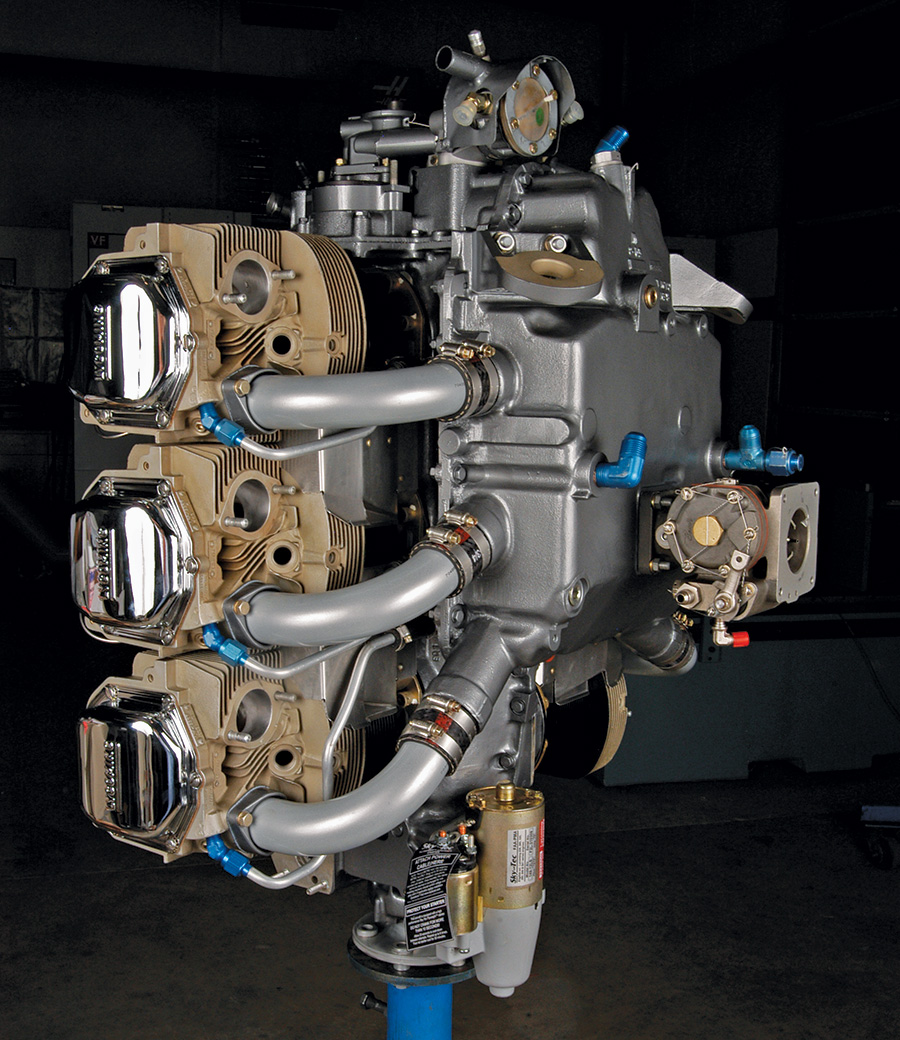
Experience shows carburetion’s peak power advantage from a denser charge is about 4%, and in highly developed engines, swapping from carburetion to fuel injection may show a peak power loss; NASCAR racers recently went though this when rules mandated a switch to fuel injection. That said, general aviation engine intake manifolds and carburetors are often basic enough that switching to fuel injection gains so much in better fuel distribution that there is a net gain in peak power.
As we just uncovered, the big downside of carburetion’s single-point fuel distribution is the resulting “wet” manifold can’t help but deliver inconsistent mixtures among the cylinders. Fuel, with its greater inertia, can ram into sharp turns in the runners, while air easily whips around the corner. And inside long intake runners, fuel can condense from the mixture during cold operations. All this is inefficient and eliminates the possibility of aggressive lean-of-peak operation as some cylinders may be quite lean and others still slightly rich of peak, right in the detonation window.
Carburetors are susceptible to icing as well. The trouble lies at the carb’s venturi, where the combination of the expanding air on the backside of the venturi, along with the fuel evaporating into the air stream, results in dramatic temperature reduction. As we learned in ground school, this is enough to cause the water in the air to freeze in the carburetor even on a 70 F day, choking off air supply and killing engine power. Some sort of carburetor heat is therefore required. Finally, because the float bowl relies on gravity carburetion has limits in aerobatic applications, too.
All said, carburetion is the cheap, simple, reliable solution in general aviation engines as we know them. Those qualities continue to make carbureted engines logical choices in recreational aircraft.









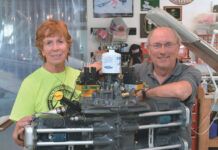
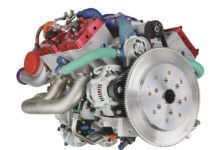
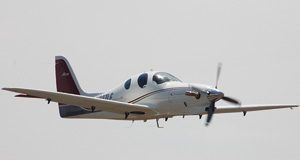
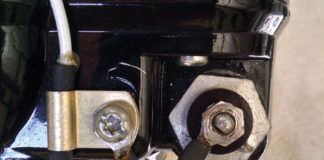

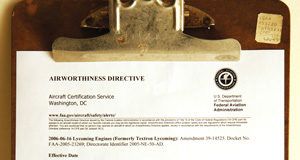
Re the pic of Marvel Schebler carb. Nice air intake. I thought I saw a similar ABS elbow at Home Depot 😆